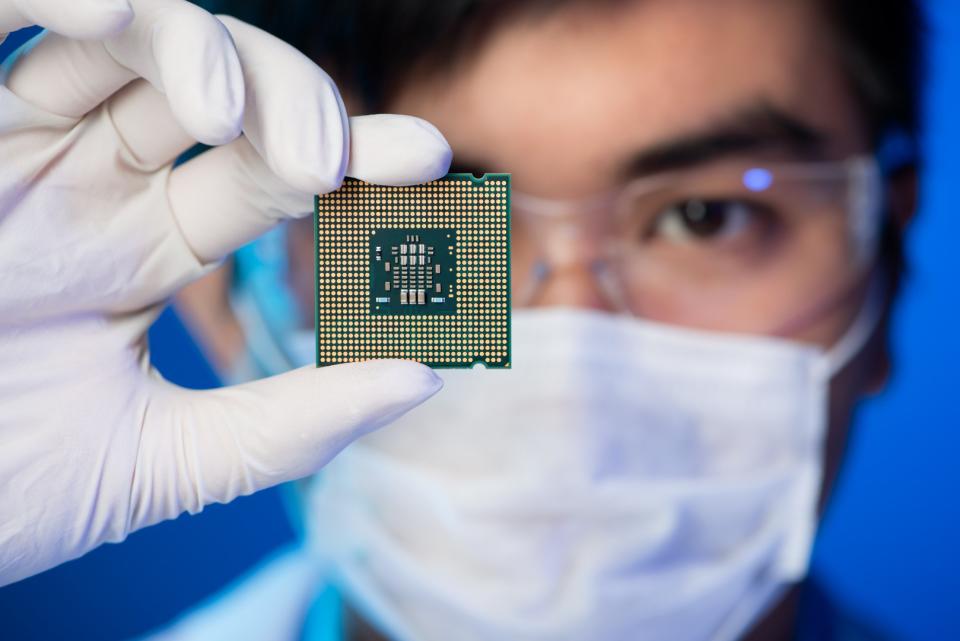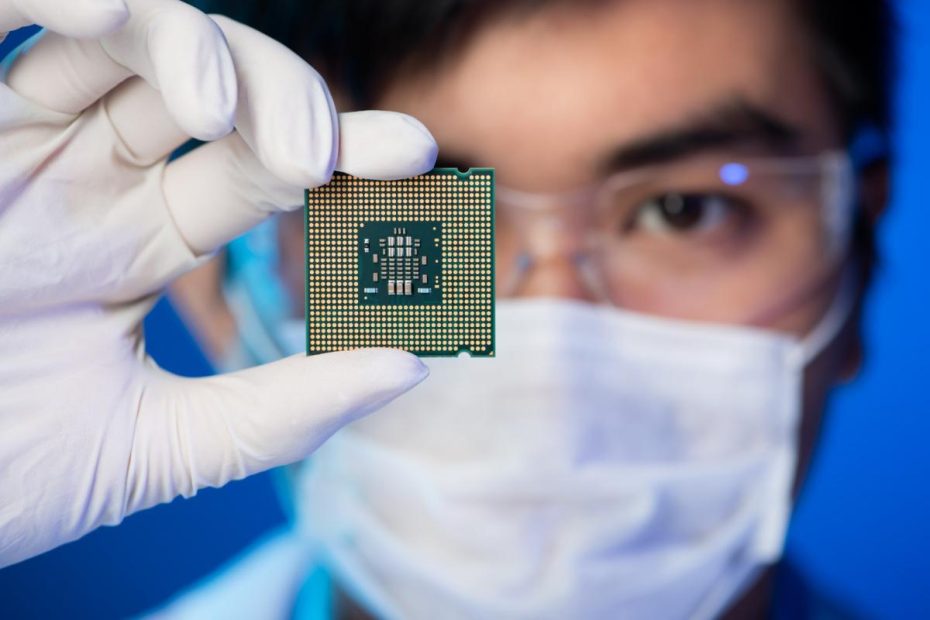
One of the most difficult aspects of investing is distinguishing between patience and stubbornness. Sometimes you're wrong, other times you're right Look wrong. Recognizing the difference between the two and not panicking when everyone else seems to disagree with you can mean the difference between great results and disaster.
Semiconductor giant Intel (NASDAQ: INTC) is going through a painful reversal. The company is investing heavily in manufacturing and is trying to grow a foundry business from nothing to a rival to a market leader TSMC. At the same time, Intel is playing catch-up as a rival in its product divisions AMD releases great products.
This was never going to be quick, easy or cheap. In addition to the challenges of quickly bringing new manufacturing processes into production, Intel faced a brutal downturn in the PC market and data center customers prioritizing AI chips over general-purpose CPUs. The company has been forced to take drastic action to get its finances in order and reach the finish line, announcing a $10 billion cost-cutting program that includes laying off 15% of its workforce.
Intel shares crashed after that cost-cutting news, briefly falling below $20 per share. Intel is now trading below book value, a valuation that is almost unthinkably pessimistic. The company is still the market leader in PC and server CPUs, and its production resources are certainly not worthless.
For Intel shareholders, a decision must be made: am I wrong, or do I just look wrong? I chose the latter and bought more shares of Intel when it hit a multi-year low. This is why.
Intel can still make great products
In the past, when Intel's product divisions and manufacturing operations were closely intertwined, delays on the production side wreaked havoc on the product side. Chronic delays in Intel's 10nm manufacturing process, a version of which was renamed Intel 7 and used for PC and server chips that didn't hit the market until 2023, made it virtually impossible for Intel to keep pace with AMD.
In server CPUs, Intel lagged heavily behind AMD in performance and efficiency. The situation was not as dire in the PC CPU sector, but Intel's chips are power-hungry and face stability issues.
Intel is now reaching the light at the end of the tunnel. The company's recently launched Sierra Forest and Granite Rapids server CPUs have moved to the company's Intel 3 manufacturing process and significantly increased the number of cores. Based on early reviews, Granite Rapids has closed the performance gap with AMD.
On the PC side, Intel has turned to TSMC for production. Both Lunar Lake for laptops and Arrow Lake for desktops outsource production, with the company planning to move future chips back in-house once the Intel 18A process is ready. This decision seems to be paying off. Lunar Lake laptops deliver incredible battery life numbers, and the soon-to-be-launched Arrow Lake will likely be drastically more efficient than Intel's last-generation chips.
The bottom line: Intel's overall product lineup is the strongest in years.
Intel 18A is on schedule
The Intel 18A process is critical to Intel. The company plans to make many of its own products using this process, and this will be the main draw for the foundry sector. Intel has already won a number of major customers, including Microsoft And Amazon.
It will take some time to generate meaningful external revenue from Intel 18A, which will start scaling up production next year. The good news is that the process appears to be on track. Intel announced last month that defect density for Intel 18A is already at an acceptable level, an indication that yields for the process will be excellent.
Intel's foundry segment is currently losing billions of dollars annually on paper, but this should come as no surprise. Intel needs to make huge investments well before revenue. Once external revenues start rolling in, the profitability picture will start to improve.
Intel is taking the step to split its foundry operations into a subsidiary, a move that could make potential customers feel more comfortable and allow for outside investment. Intel could eventually take the foundry business public as a way to raise money, although that probably won't happen anytime soon.
Regardless of how Intel ultimately structures itself, the manufacturing investments the company has made still appear to be paying off in the long run.
Patience is the key
There is a lot of uncertainty about how exactly the Intel story will play out. The company has reportedly been approached about a takeover, although that seems unlikely given the antitrust concerns. Investing in Intel today is not a bet on a specific outcome. Instead, it's a safe bet that paying around 80% of book value for a company like Intel will work out well in the end.
That's the bet I'm making. It will take at least a few years to see if I am patient or stubborn.
Should You Invest $1,000 in Intel Right Now?
Before you buy shares in Intel, consider this:
The Motley Fool stock advisor The analyst team has just identified what they think is the 10 best stocks for investors to buy now… and Intel wasn't one of them. The ten stocks that survived the cut could deliver monster returns in the coming years.
Think about when Nvidia created this list on April 15, 2005… if you had $1,000 invested at the time of our recommendation, you would have $744,197!*
Stock Advisor provides investors with an easy-to-follow blueprint for success, including portfolio building guidance, regular analyst updates, and two new stock picks per month. The Stock Advisor is on duty more than quadrupled the return of the S&P 500 since 2002*.
View the 10 stocks »
*Stock Advisor returns September 30, 2024
John Mackey, former CEO of Whole Foods Market, an Amazon subsidiary, is a member of The Motley Fool's board of directors. Timothy Green has positions in Intel. The Motley Fool holds positions in and recommends Advanced Micro Devices, Amazon, Microsoft, and Taiwan Semiconductor Manufacturing. The Motley Fool recommends Intel and recommends the following options: long January 2026 $395 calls at Microsoft, short January 2026 $405 calls at Microsoft, and short November 2024 $24 calls at Intel. The Motley Fool has a disclosure policy.
Why I Bought More Intel Stock was originally published by The Motley Fool

